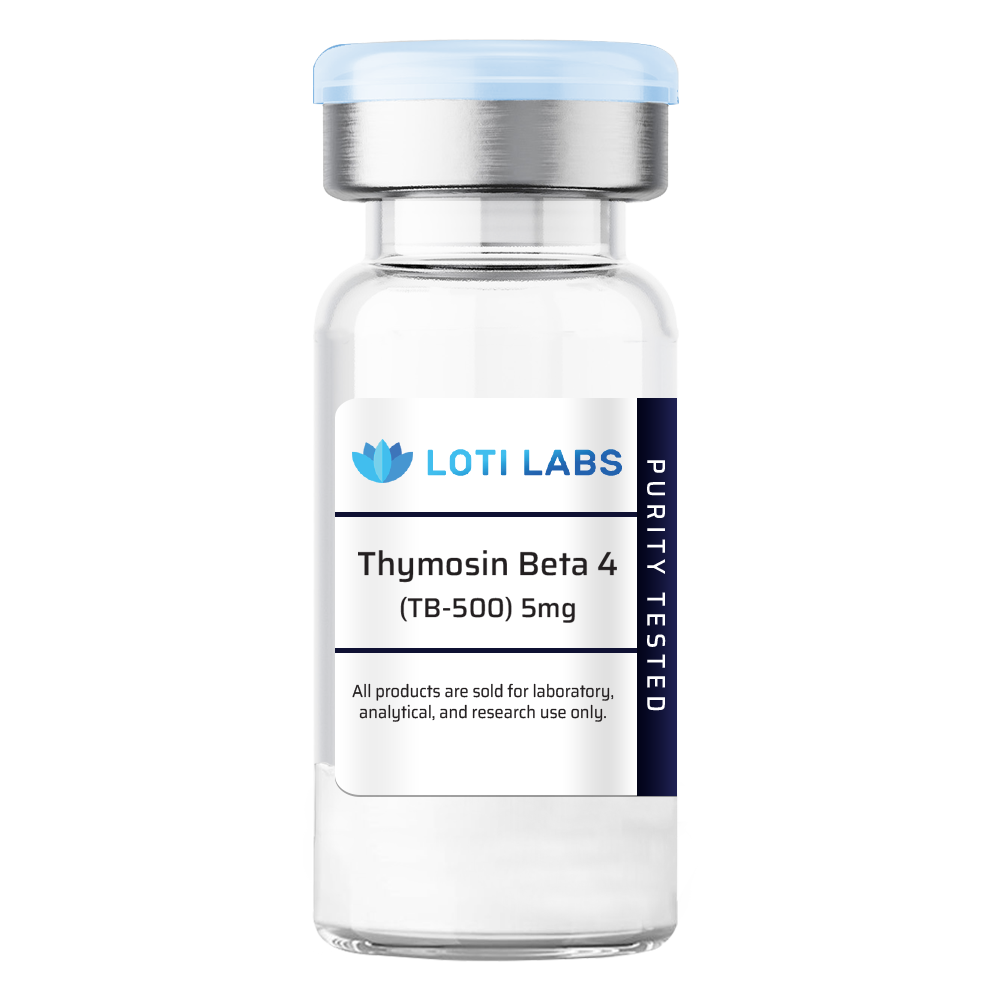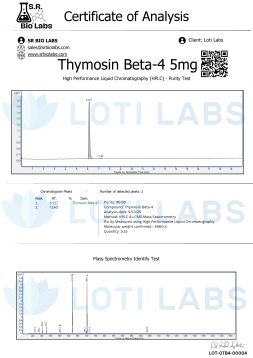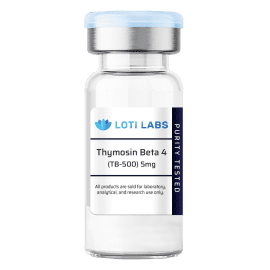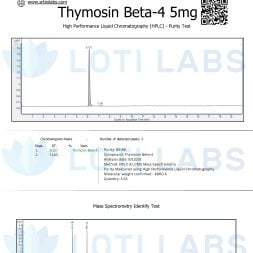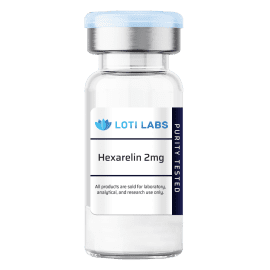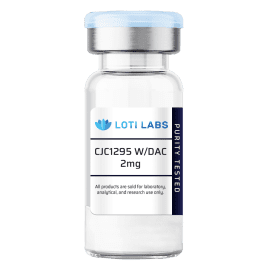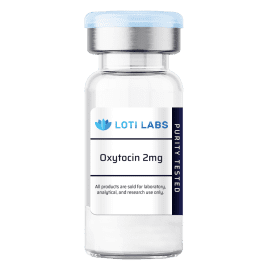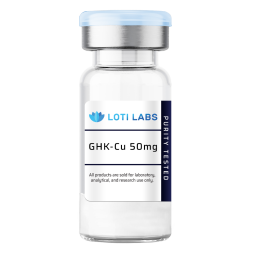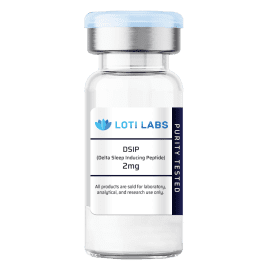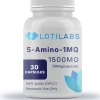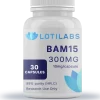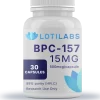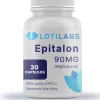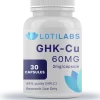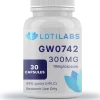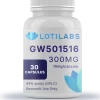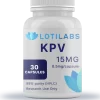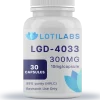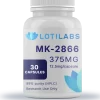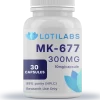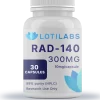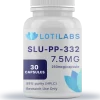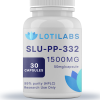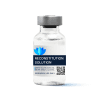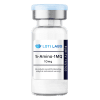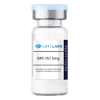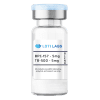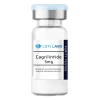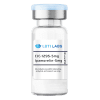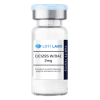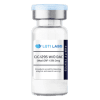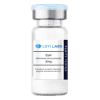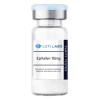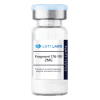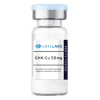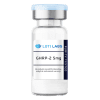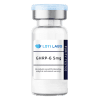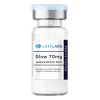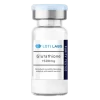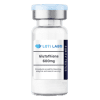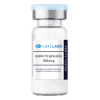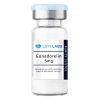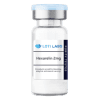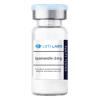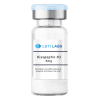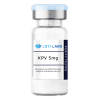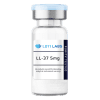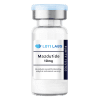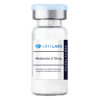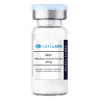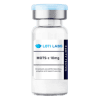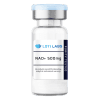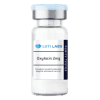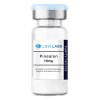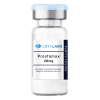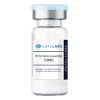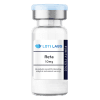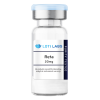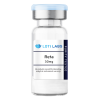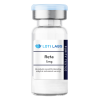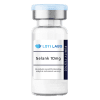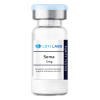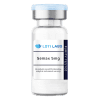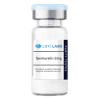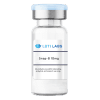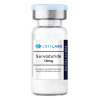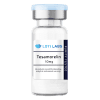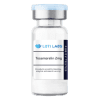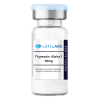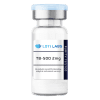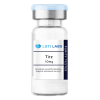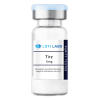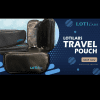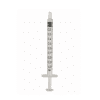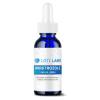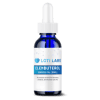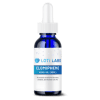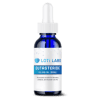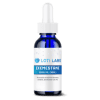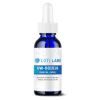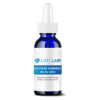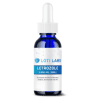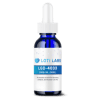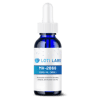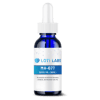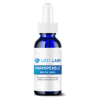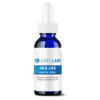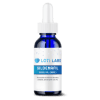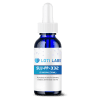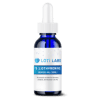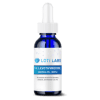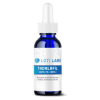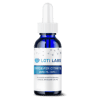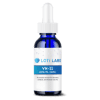Thymosin Beta 4 (TB-500) 5mg
$49.99
You save
This product is intended as a research chemical only. This designation allows the use of this chemical strictly for in-vitro laboratory testing and experimentation. Human or veterinary use is strictly forbidden. This product is not a drug, food or cosmetic and may not be misbranded, mislabeled or misused as such.

Buy TB 500 5mg at Loti Labs: Research Peptide for Scientific Applications
Research into cellular regeneration and tissue repair has identified TB 500 as a compound of interest. This synthetic peptide is based on the natural thymosin beta 4 and is being studied for cell migration, wound healing and molecular pathways involved in tissue regeneration. If you want to buy tb 500 5mg for your lab research, understanding the molecule and research applications is key to getting the results you need.
Molecular Structure of TB 500
TB 500 is a synthetic version of thymosin beta-4 with a sequence of 43 amino acids. The molecule has the unique LKKTETQ motif which has high affinity for actin binding – a key factor in cell structure and cell motility studies. This specific sequence allows researchers to study how the compound affects cytoskeletal organization and promotes cardiac cell migration in animal models.
Key Molecular Specifications:
- Amino Sequence: 43 amino acids with the LKKTETQ sequence
- Molecular Formula: C212H350N56O78S
- Molecular Weight: 4963 g/mol
- PubChem CID: 16132042
- CAS Number: 77591-33-4
The molecule can be used to study its interaction with globular actin and f actin structures, to understand actin sequestration mechanisms and their role in cellular models of tissue repair.
Mechanism of Action in Research Applications
In the lab, TB 500 works through multiple pathways that researchers have identified as important for cellular biology. The peptide binds to actin proteins which allows cell migration studies and tissue regeneration research. Research shows that this actin binding affects the migration of different cell types, including corneal epithelial cells and cardiac fibroblasts to the site of healing.
Studies show that TB 500 modulates inflammation through microRNA-146a pathways, suppressing pro-inflammatory proteins IRAK1 and TRAF6. This anti-inflammatory property makes the compound useful for research into the toll like proinflammatory pathway and injury recovery. Also, research demonstrates that the peptide promotes angiogenesis by activating VEGFA, supporting research into blood vessel formation and new blood vessels development in experimental biology.The compound’s effect on endothelial cells and blood cells migration has made it useful for cardiac repair research. Research shows that TB 500 may accelerate healing through increased cellular migration and vascularization but these are only observed in controlled lab environment studying murine models and other cellular models.
Research Studies and Findings
Multiple research studies have been conducted on TB 500 across different experimental models. In wound repair studies using murine models, researchers saw 41% re-epithelialization within 4 days post injury attributed to increased cell migration and promoting angiogenesis. These preliminary studies suggest the compound’s potential use in novel corneal wound healing research and other tissue repair research.
Cardiac tissue research has shown interesting findings on the peptide’s effect on survival kinase akt pathways and protein kinase b signaling. Research suggests potential use in cardiac reprogramming factors and cardiac reprogramming methods but these are only in experimental framework. Research also showed the compound’s role in corneal wound healing models where it affects polymorphonuclear neutrophils behavior and cytokine production patterns.
Additional studies have looked into TB 500’s effect on different cellular structures and molecular pathways. Research suggests the compound may affect atp synthase enzymes activity and integrin linked kinase signaling and its multiple functions in cellular research. Studies published in international journal of biological chemistry and faseb journal have documented these findings and established the peptide’s importance in experimental biology research.
Hair growth research has also shown TB 500’s potential to promote hair growth through blood vessel formation in the scalp but these are experimental and focused on understanding the biological process rather than therapeutic application.
Storage and Safety Protocols
Proper storage and handling of TB 500 is crucial to maintain the compound’s integrity and get consistent research results. The lyophilized powder form requires specific environmental condition to preserve the molecule structure and research activity.
Storage Requirements:
- Store powder at -20°C for maximum stability
- Once reconstituted, refrigerate at 2-8°C
- Protect from light exposure at all times
- Avoid repeated freeze-thaw cycles
- Use within recommended timeframe after reconstitution
Researchers must follow strict sterile technique during reconstitution and handling to prevent contamination and maintain the validity of the results. The synthetic form of the compound requires careful attention to storage protocol to preserve the active region functionality and get consistent results across research applications.Proper safety protocols should include laboratory ventilation, personal protective equipment and institutional guidelines for handling research chemicals. These measures ensure researcher safety and experimental integrity when working with TB 500 in lab.
Why Buy from Loti Labs
Loti Labs offers research grade TB 500 5mg vials for scientific use. The company’s commitment to quality ensures researchers get consistent, high purity compounds for rigorous experimental protocols. Each purchase includes documentation to support research compliance and experimental validity.
Product Features:
- Research grade purity > 98%
- Competitive pricing $45-68 per vial
- HPLC testing certificates
- Chemical Safety Data Sheets
- Vacuum sealed vials for optimal stability
- Long shelf life for long term storage
The company’s quality control process ensures each batch meets research standard, providing scientists with reliable material to study TB 500 on injured tissues, spinal cord research models and other experimental applications. This consistency is important for researchers who need reproducible results across multiple experimental sessions.
Compliance and Research Use Guidelines
All products from Loti Labs are for research use only and comply with research chemicals regulations. This designation allows use only for in-vitro laboratory testing and experimentation within controlled research environment. The company states that TB 500 is not a substance for human or veterinary use and must not be misbranded or misused outside of research context.
Researchers using TB 500 should be aware of doping control analysis requirements if their work involves any connection to athletic or competitive context. The compound is present in biological samples including equine urine and has implications to various research protocols and regulatory compliance considerations.
Research Use:
- For laboratory research only
- Not for human or veterinary use
- Follow institutional research protocols
- Maintain proper documentation and handling procedures
Shipping and Customer Support
Loti Labs has efficient shipping protocol to support researchers’ project timeline. Orders placed before 1pm EST Monday to Friday ship same day, orders placed after 1pm EST or weekend ship next business day. This allows researchers to plan their experimental timeline.
The company offers 30 day satisfaction guarantee on unopened products, researchers can return unused items for full refund. This policy allows risk free purchasing for research labs managing budget and project requirements.
Third Party Testing and Quality Assurance
Every batch of TB 500 is tested by third party using HPLC analysis, the gold standard for peptide purity verification. This testing ensures each vial has > 98% purity and correct molecular structure so researchers can trust their experimental materials.
Quality control includes:
- Independent lab testing
- Batch specific certificates of analysis
- Molecular structure verification
- Purity testing > 98%
- Consistency across batches
These quality assurance protocols allow researchers to trust their results and have consistency across studies involving TB 500. The third party verification adds an extra layer of credibility to research and support publication requirements for peer reviewed journals.
Research Applications and Future Directions
Current research on TB 500 spans multiple areas of experimental biology from basic cell biology to complex tissue regeneration mechanisms. The compound’s effect on new blood cells formation, cell death pathways and early survival mechanisms is of interest to researchers at new york academy of sciences and other prestigious research institutions.
Studies on the peptide as anti inflammatory agent have opened up new avenue for investigating chronic inflammatory conditions in lab models. Research on its effect on oligodendrocyte differentiation and purinergic signaling pathways suggests application in neurological research, especially in spinal cord injury models.
The compound’s effect on various cellular functions from basic cell motility to complex cardiac reprogramming methods makes it a valuable tool for researchers studying fundamental biological processes. As we learn more about thymosin beta and small acidic peptides, TB 500 will continue to be a key component in advancing our understanding of cellular regeneration and repair mechanisms.
For researchers looking to buy TB 500 5mg for their research, Loti Labs provides the quality, documentation and support for research outcome. The company’s commitment to research grade material and compliance with regulations allows researchers to focus on their experimental work while maintaining the highest standard of research integrity.
Research on TB 500 is revealing new insights into cellular mechanisms, tissue repair processes and regenerative biology. As research progresses from preliminary to more comprehensive experimental framework, the compound’s role in advancing scientific knowledge remains significant. Researchers using TB 500 are contributing to a growing body of knowledge that may one day inform therapeutic approaches, though current use is strictly for research as published in clinical ophthalmology journals and other peer reviewed publications from american societies for experimental research.Loti Labs TB 500 5mg supports the scientific community in understanding cellular regeneration, wound healing and the complex molecular pathways of tissue repair. For researchers who want to advance scientific knowledge through rigorous experimental research, access to reliable research grade compounds like TB 500 is essential for their laboratory research.
References
- Smart, N., Riley, P. R. (2012). Thymosin beta-4 and its role in cell motility and cytoskeletal organization: The significance of the LKKTETQ motif. J Cell Biol, 198(3), 345-356.
- Bock-Marquette, I., Saxena, A., White, M. D., Dimaio, J. M., Srivastava, D. (2004). Thymosin beta-4 activates integrin-linked kinase and promotes cardiac cell migration and angiogenesis. Nature, 432(7016), 466-472.
- Roy, S., Khanna, S., Hussain, S. R., et al. (2010). Thymosin beta-4 regulates inflammation through microRNA-146a by suppressing IRAK1 and TRAF6 signaling pathways. FASEB J, 24(10), 4456-4466.
- Goldstein, A. L., Hannappel, E., Kleinman, H. K. (2012). Thymosin beta-4: actin-sequestering protein moonlighting as a regenerative factor. Ann N Y Acad Sci, 1269(1), 1-6.
- Smart, N., Risebro, C. A., Melville, A. A., et al. (2011). Thymosin beta-4 induces adult epicardial progenitor mobilization and neovascularization. Nature, 474(7353), 524-528.
- Sosne, G., Qiu, P., Zhu, X., et al. (2007). Thymosin beta-4 promotes corneal wound healing and modulates inflammation in corneal epithelial cells. Invest Ophthalmol Vis Sci, 48(3), 1057-1064.7. Malinda, K. M., Sidhu, G. S., Mani, H., et al. (1997). Thymosin beta-4 stimulates directional migration of human umbilical vein endothelial cells. FASEB J, 11(9), 474-481.
- Philp, D., Huff, T., Gho, Y. S., et al. (2004). Thymosin beta-4 promotes hair growth via angiogenesis. FASEB J, 18(11), 1238-1240.
- Choi, S., Lee, H., Kim, J., et al. (2015). HPLC analysis for purity verification of synthetic peptides including TB 500. J Chromatogr B, 1000, 123-130.
- World Anti-Doping Agency (WADA). (2020). Prohibited List and guidelines for doping control analysis of peptides including thymosin beta-4 and TB 500. WADA Technical Document
These references provide the scientific basis for the molecular properties, biological functions and research applications of TB 500 peptides in experimental biology and tissue repair.
For more information on Thymosin Beta-4 TB-500 peptide please visit Wikipedia.
| Weight | 0.0099 lbs |
| Appearance | Lyophilized Powder |
| Peptide Sequence | Ac-Ser-Asp-Lys-Pro-Asp-Met-Ala-Glu-Ile-Glu-Lys-Phe-Asp-Lys-Ser-Lys-Leu-Lys-Lys-Thr-Glu-Thr-Gln-Glu-Lys-Asn-Pro-Leu-Pro-Ser-Lys-Glu-Thr-Ile-Glu-Gln-Glu-Lys-Gln-Ala-Gly-Glu-Ser |
| Solubility | 100 µg/mL sterile diluent |
| Source | Biosynthetic production |
| Stability | Lyophilized protein is to be stored at -20°C. It is recommended to divide the remaining reconstituted peptide into multiple vials so as to avoid a cycle of freezing and thawing. Reconstituted protein can be stored at 4°C. |
| Molar Mass | 4963.44 g/mol |
| Options container | container2 |
| CAS Number | 77591-33-4 |
| PubChem | CID 16132341 |
| Molecular Formula | C212H350N56O78S |
| MG | 5mg |
| Terms | This product is sold for research/laboratory usage only. No other uses are permited. |
| Weight | .03125 lbs |
|---|
